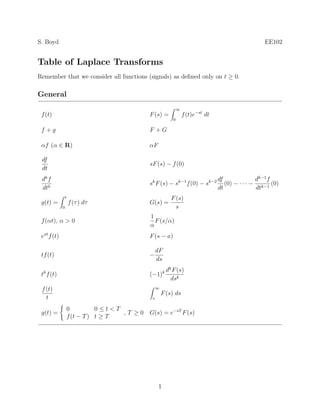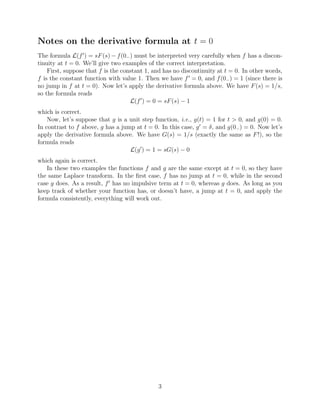This document provides a table of common Laplace transform pairs and notes on interpreting the derivative formula when functions have discontinuities at t=0. The table lists many specific functions and their corresponding Laplace transforms. It also discusses how to properly apply the derivative formula when functions are constant or have a jump at t=0, noting that the formula must account for any discontinuities.


